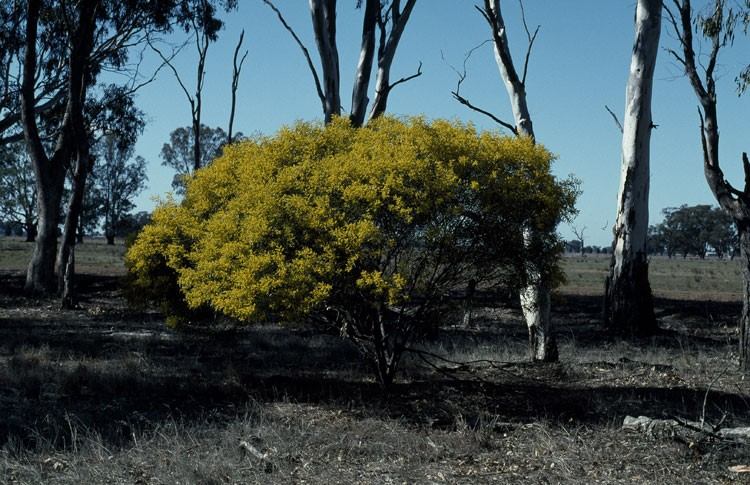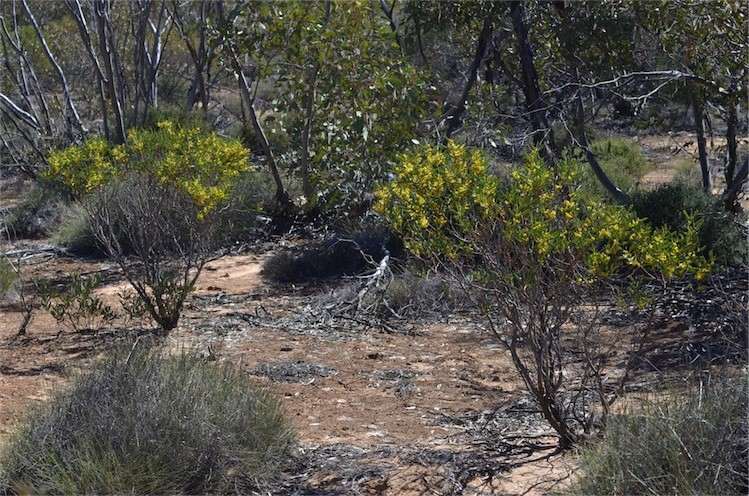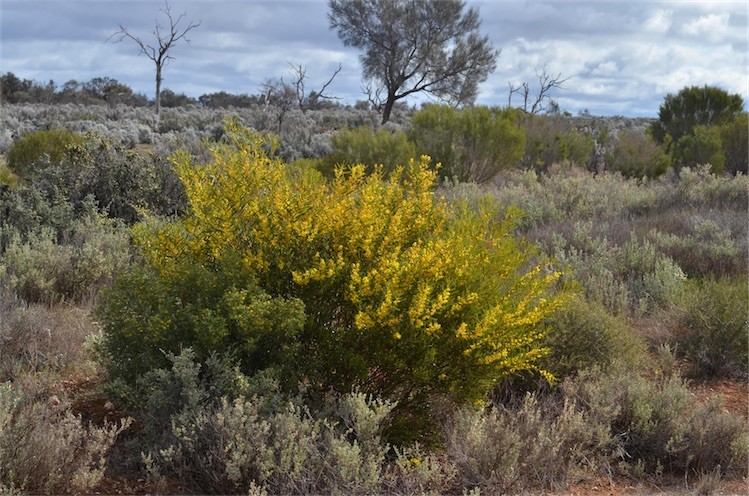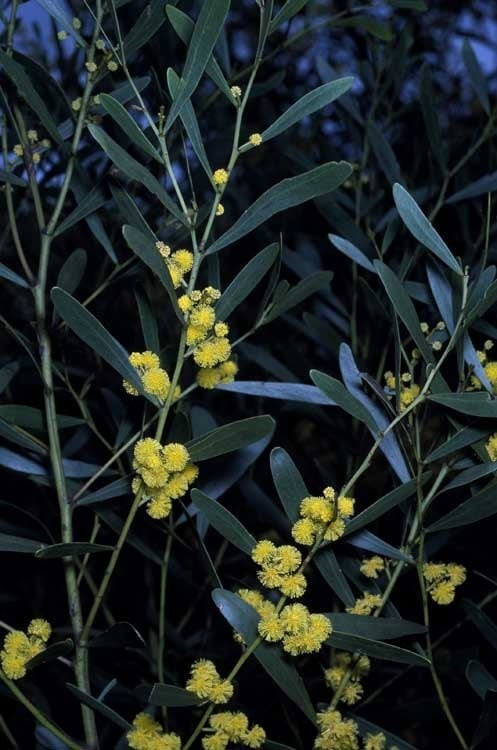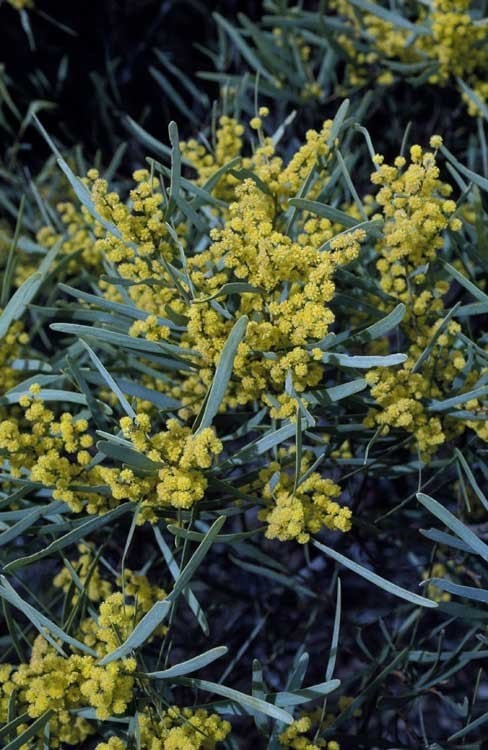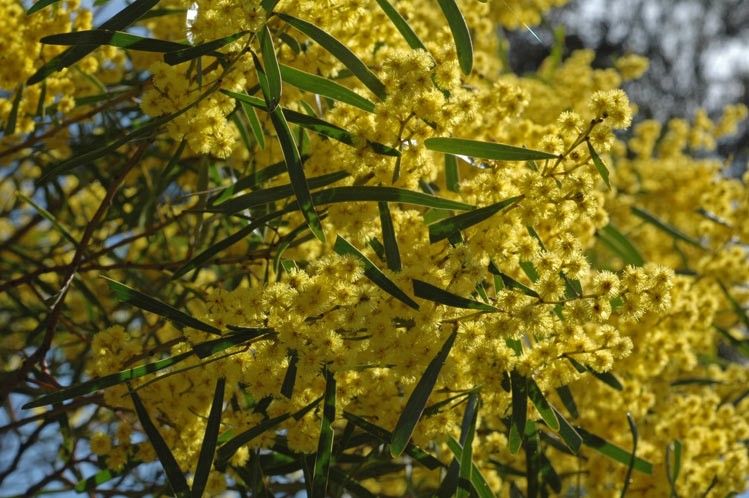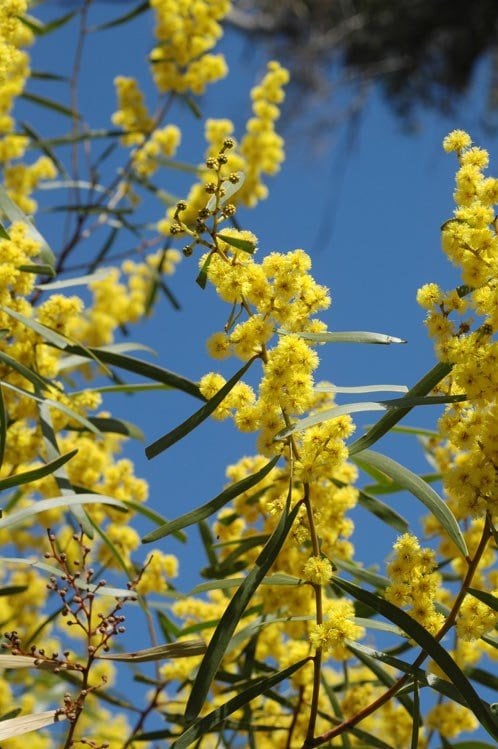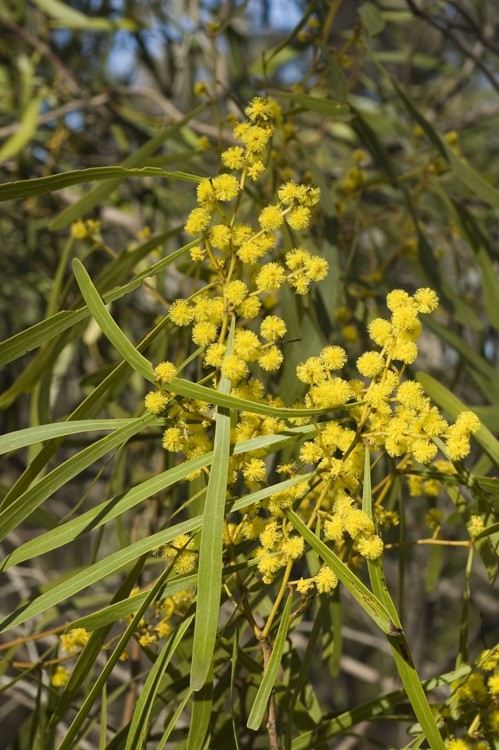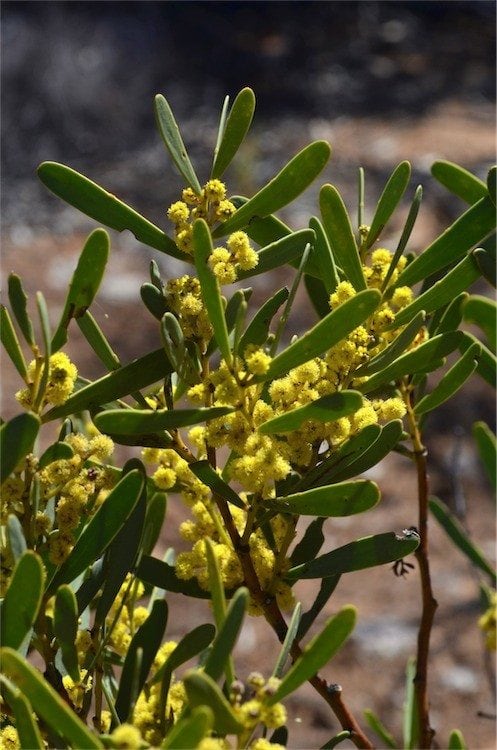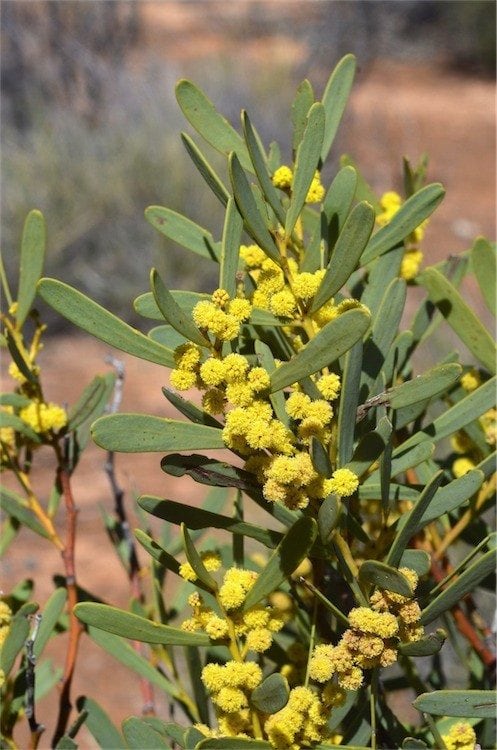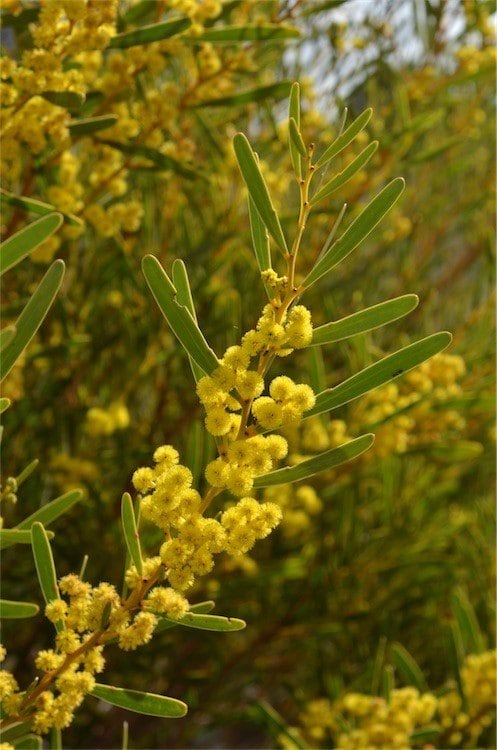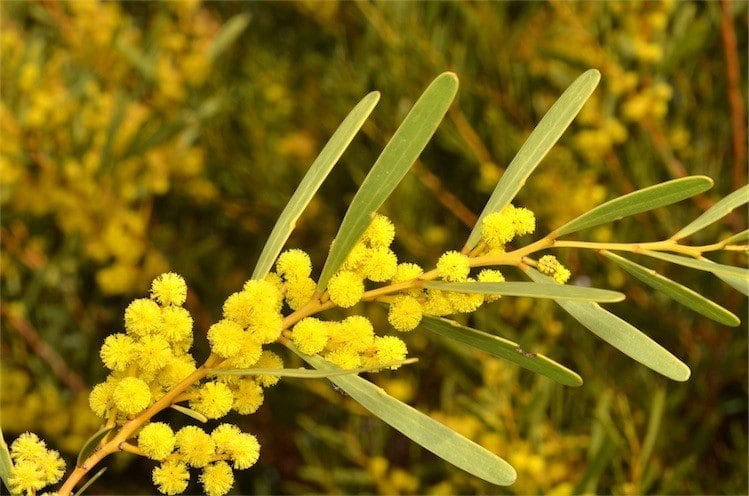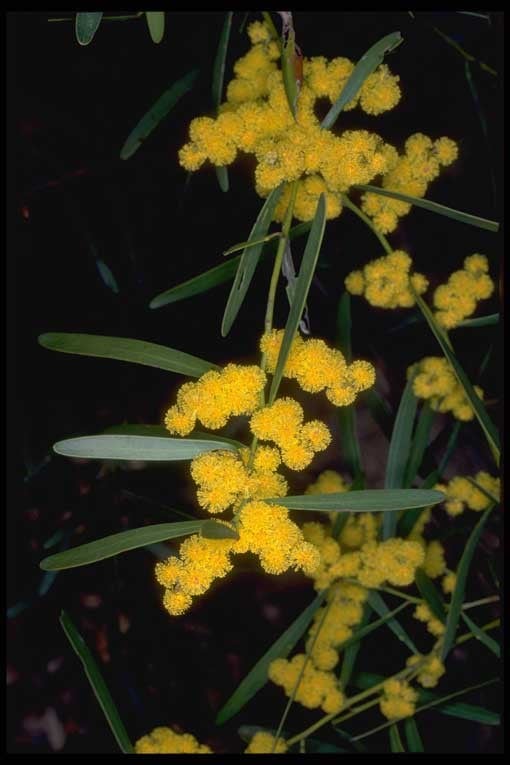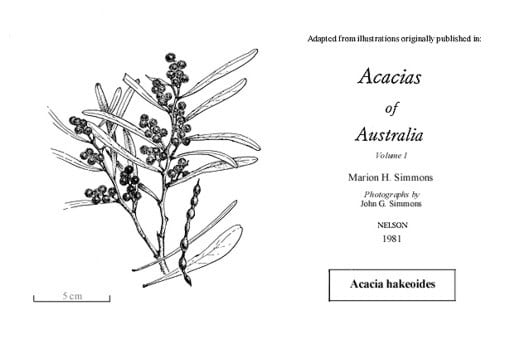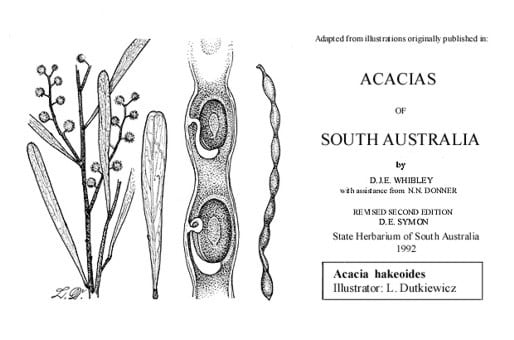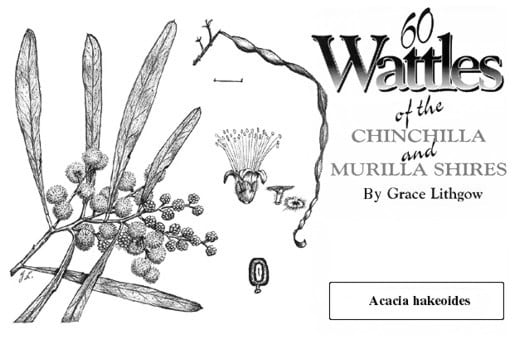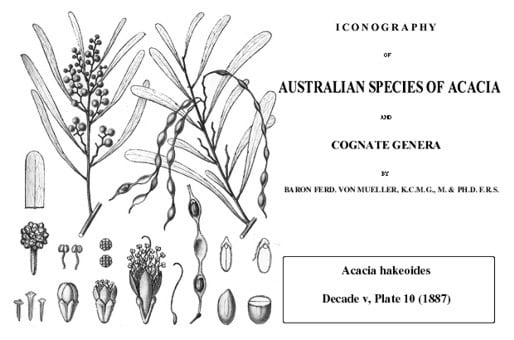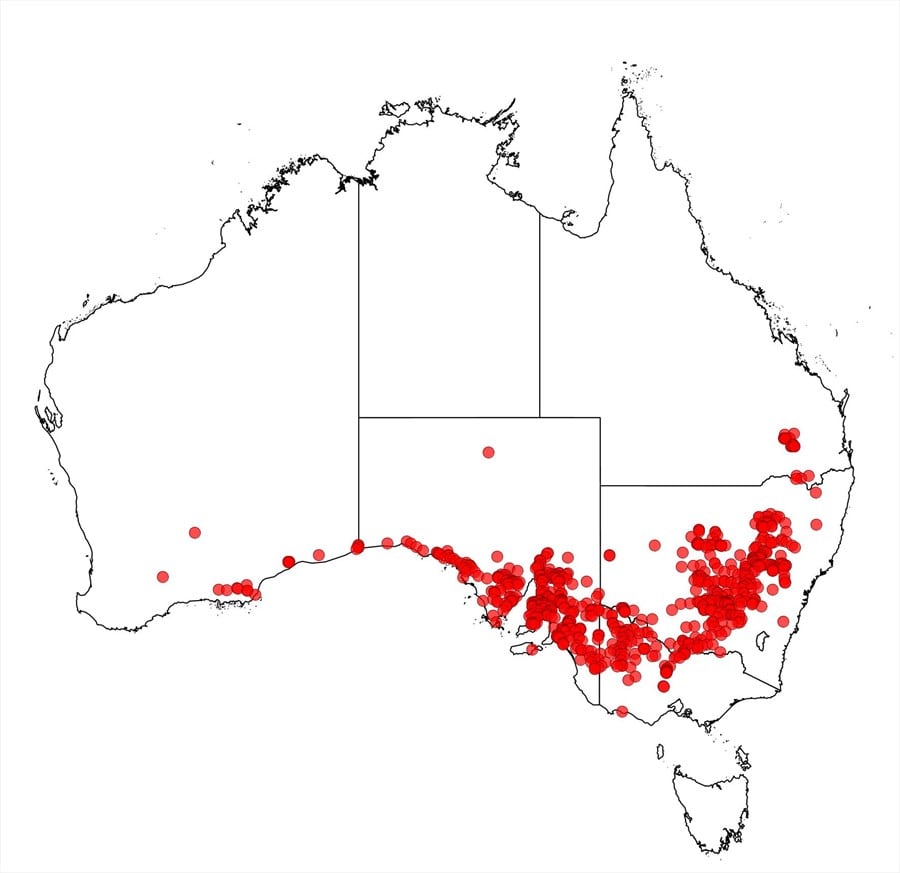Acacia hakeoides A.Cunn. ex Benth.
WATTLE
Acacias of Australia
Common Name
Hakea-leaved Wattle, Western Black Wattle, Hakea Wattle and more
Family
Fabaceae
Distribution
Scattered in southern Australia from Clyde Hill, NE of Esperance, W.A., through southern S.A., inland Vic., and on the Great Divide, its inland slopes and adjacent plains in N.S.W., N to the Tara area, Qld; an isolated occurrence near Broken Hill, N.S.W.
Description
Bushy shrub or tree to c. 4 m high. Branchlets terete, glabrous. Phyllodes narrowly oblanceolate, sometimes linear, mostly straight, usually 4.5–12 cm long, 3–12 mm wide, narrowed at base, obtuse, green, glabrous, 1-nerved per face; lateral nerves longitudinally anastomosing; gland normally 1–2.5 cm above pulvinus. Inflorescences 6–12-headed racemes; raceme axes mostly 1–5 cm long, glabrous, drying dark brown to blackish; peduncles 2–5 mm long, stout, glabrous or sparsely appressed puberulous, drying dark brown to blackish; heads globular, usually 20–27-flowered, bright golden; bracteoles evident in buds, with laminae ±circular, dark brown to black and white-fimbriolate. Flowers 5-merous; sepals 5/6-united. Pods usually ±moniliform, to 12 cm long, 4–7 mm wide, ±thinly coriaceous to crustaceous, very dark brown to black, glabrous. Seeds longitudinal, oblong to elliptic, 5–7 mm long, dull, black; aril clavate.
Habitat
Grows in a variety of soils but commonly in sand or loam, in open scrub or Eucalyptus woodland; in N.S.W. it sometimes occurs on rocky ranges.
Specimens
W.A.: Parmango Rd, adjacent to Clyde Hill, B.R.Maslin 5826 (MEXU, PERTH). S.A.: c. 10 km NE of Arno Bay, N.N.Donner 2160 (AD, MEL). Qld: Condamine–Kogan road, c. 2 km W of Wieambilla Ck, V.Hando 17 (PERTH). N.S.W.: Barellan Rd, 2.1 km NE of Newell Hwy near Naranderra, R.Coveny 12016 & P.Hind (AD n.v., B n.v., CANB n.v., K n.v., NSW, PERTH, US n.v., Z n.v.). Vic.: Big Desert, A.C.Beauglehole 38333 (MEL).
Notes
A variant from near Eaglehawk, in the Bendigo ‘Whipstick’ forest, Vic., which was included under A. hakeoides by A.B.Court, in J.H.Willis, Handb. Pl. Victoria 2: 231 (1973), is recognised by its phyllodes 11–15 cm long and 3–5 mm wide, heads c. 35-flowered and pods less constricted between the seeds than normal (e.g. Moon Mines, beyond Eaglehawk, Aug. 1921, D.J.Paton, MEL). More or less straight-edged pods sometimes also occur in W.A. Putative natural hybrids between A. pycnantha and A. williamsonii from the Bendigo ‘Whipstick’ superficially resemble A. hakeoides.
Frequently a multistemmed shrub or small tree which produces suckers if its roots are disturbed (fide D.J.E.Whibley & D.E.Symon, Acacias S. Australia 2nd edn, 150 (1992)) and may form dense thickets.
Information on the biological and ecological features, and the utilisation potential, of this species is given in B.R.Maslin and M.W.McDonald, AcaciaSearch: Evaluation of Acacia as a woody crop option for southern Australia, RIRDC Publication No. 03/017, 92–96 (2004).
The phyllodes are somewhat variable in shape and size, although most commonly they are narrowly oblanceolate, 4.5–12 cm long, 5–12 mm wide, and rather abruptly narrowed to a rounded, obtuse apex. Specimens with linear phyllodes 3–4 mm wide occur scattered throughout the range (e.g. the Dubbo area, N.S.W.); a long phyllode variant from near Bendigo is noted below. The gland is normally on the lower 1/3 of the phyllode 1–2.5 cm above the pulvinus, but sometimes (especially plants from W.A.) it occurs near the middle of the phyllode c. 4.5 cm above the pulvinus. The upper margin of the phyllode is sometimes kinked at the gland.
Closely related to A. williamsonii. Its flowers and bracteoles are similar to those of A. obtusata and A. hamiltoniana. Similar to A. difformis.
FOA Reference
Data derived from Flora of Australia Volumes 11A (2001), 11B (2001) and 12 (1998), products of ABRS, ©Commonwealth of Australia
Author
B.R.Maslin
Minor edits by B.R.Maslin
This identification key and fact sheets are available as a mobile application:
URL: https://apps.lucidcentral.org/wattle/
© Copyright 2018. All rights reserved.


